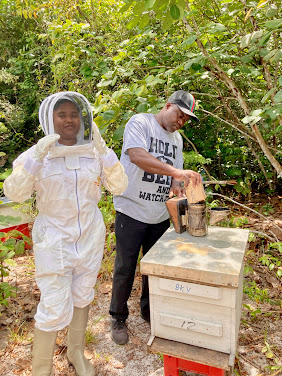Books Need Care and Feeding Too!
 The libraries in the Dominican Republic face serious challenges when it comes to book stacks and storage. Library materials require stable environmental conditions. Spikes in humidity and heat are unkind to books. The library at the Universidad ISA faces such challenges. The library windows are open with no glass panes or screens. There are some wooden blinds that are often closed to keep out the sun.
The libraries in the Dominican Republic face serious challenges when it comes to book stacks and storage. Library materials require stable environmental conditions. Spikes in humidity and heat are unkind to books. The library at the Universidad ISA faces such challenges. The library windows are open with no glass panes or screens. There are some wooden blinds that are often closed to keep out the sun. While this helps keep the students and library staff comfortable, the books in the stacks suffer from the heat and humidity. Since the library is not air conditioned some ceiling fans keep the air moving. Because the windows are open, pests such as termites, polillas, and moths have direct access to the stacks. They enjoy a diet of glue from the bindings and paper from the textblock.
While this helps keep the students and library staff comfortable, the books in the stacks suffer from the heat and humidity. Since the library is not air conditioned some ceiling fans keep the air moving. Because the windows are open, pests such as termites, polillas, and moths have direct access to the stacks. They enjoy a diet of glue from the bindings and paper from the textblock.Mold and mildew thrive in tropical climates and the books in the Biblioteca ISA are not immune to this. We found evidence of mold and mildew in many books in the stacks. Other effects of high humidity are book covers droop and place stress on the bindings. The call number labels fall off easily as the adhesive loses its strength in the heat and humidity. It also becomes gummy. With no AC in the building the library material is subject to many spikes in heat and humidity. Industrial size dehumidifiers placed in the stacks would not be a good option as the building is open air and there are frequent power outages.
What to do? The ISA library is at a serious disadvantage for library material storage. Proposals for a new library building, or reconditioning the existing building have fallen to the wayside due to lack of funding. Metal shelving is rusting and will continue to do so with this environment. With no AC and no plans for adding to AC to the existing building, will keep the library material at risk.
 Many flat roofed buildings will eventually leak and the Biblioteca ISA is no exception. Several areas on the ceiling indicate leakage and unfortunately the wooden ceiling in damaged in those areas. Any library material located below those leaks of course are at risk for getting wet and mold spores will sprout quickly.
Many flat roofed buildings will eventually leak and the Biblioteca ISA is no exception. Several areas on the ceiling indicate leakage and unfortunately the wooden ceiling in damaged in those areas. Any library material located below those leaks of course are at risk for getting wet and mold spores will sprout quickly.The ISA library staff work hard to keep the stack areas clean. They wear dust masks while using clean paint brushes to dust the books.
 Our recommendations for a library in this climate is to keep good air flow. The ceiling fans should be in working condition and used to keep the air circulating. The university maintenance staff should also check the ground moisture from the concrete floor and walls. If dampness is detected, a waterproof barrier should be placed between the slab and soil/wall. The shutters should be used when direct sun is hitting the library from the east and west. Universidad ISA should also consider purchasing several dehumidifiers for the stack areas. We would also recommend investing in some environmental control equipment such as a thermometer for monitoring the stacks temperature and a hygrometer to monitor the humidity. More sophisticated equipment is available but more costly.
Our recommendations for a library in this climate is to keep good air flow. The ceiling fans should be in working condition and used to keep the air circulating. The university maintenance staff should also check the ground moisture from the concrete floor and walls. If dampness is detected, a waterproof barrier should be placed between the slab and soil/wall. The shutters should be used when direct sun is hitting the library from the east and west. Universidad ISA should also consider purchasing several dehumidifiers for the stack areas. We would also recommend investing in some environmental control equipment such as a thermometer for monitoring the stacks temperature and a hygrometer to monitor the humidity. More sophisticated equipment is available but more costly.
.png)

Comments
Post a Comment